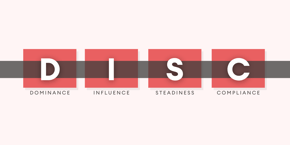Pricing strategy is a thorny issue for sales teams at the best of times, but never more so than when rising cost pressures are in play. Today, the raw materials used to make many of the products manufacturers and distributors sell – from copper, coffee, and corn to steel, timber, and meat – are widely experiencing record demand and have been seeing major price rises as the global economy starts to rebound from the pandemic.
Couple this with a shortage of global shipping containers to transport goods around the world, widespread labor challenges across key production and logistics roles, plus somewhat fragile supply chains in the wake of the pandemic, and it all adds up to increasing pressure on already tight margins.
But what is the best way to go about broaching the thorny issue of price rises with customers? We’ve put together a five-point checklist to help sales teams tackle the issue on the front foot when costs are escalating.
Taking charge
Few sales reps actively relish having difficult conversations with customers around the price, but thankfully, there are ways to make the process less painful. Price fluctuations are a fact of business life and when communicated clearly and in a timely fashion, are more likely to receive a positive reception.
There should be no ‘one size fits all’ approach to the process, but typically, sales teams should call individual customers in advance to raise the issue and then follow up with clear, written communication detailing the exact nature of the rises, the date they will be effective and the reasoning behind their introduction. You should always aim to inform customers as far in advance as possible to give them time to plan accordingly and, of course, give them the option to reach out with further questions as appropriate.
For those times when a pricing conversation becomes particularly fraught, it can be helpful to have defined an escalation process in advance to make available more senior team members to help move the process forward.
"It’s important that your entire organization is fully briefed when introducing price rises so that the same message can be delivered consistently to clients."
Being tech and data-driven
While price increases will be driven by immediate factors, consulting historic pricing data can be hugely instructive when deciding where to pitch new pricing structures. Sales enablement software like sales-i holds a host of data relating to price, putting teams that have access to the platform at a significant advantage over competitors who are more reliant on harvesting data from multiple spreadsheets.
What’s more, once price increases have gone through, the platform makes it easy for sales leaders and reps alike to interpret trends around evolving customer demand to inform intelligent pricing strategy over the long term and bolster customer relationships. So much of good pricing strategy revolves around good customer relations, and the more you understand about your customer through data, the better placed you’re likely to be to undertake smooth communications around price.
Emphasizing value, service, and quality
When discussing cost, customers will inevitably want to focus on the bottom-line impact of increases when this is only half of the story. Be sure to frame any price increases in terms of the value and savings you've previously delivered to a customer in relation to their overall spending, the benefits they've received, and how higher prices will enable you to continue offering the very highest levels of customer service and consistent supply of high-quality products.
This is especially important right now, given the widespread materials shortages being experienced across a number of industries. If you have particularly robust relationships throughout your supply chain, be sure to reinforce this message, as some of your competitors may not.
Context and consistency are key
Being able to comprehensively justify increasing prices is crucial when negotiating with customers, so it makes good sense to have robust evidence to hand. That means collating links to news articles, announcements from industry bodies, and any economic and financial data that demonstrate current challenges in your marketplace and show why higher prices are merited.
It’s important that your entire organization is fully briefed when introducing price rises so that the same message can be delivered consistently to clients. Strong communication between sales and marketing departments is the hallmark of any successful business, but when it comes to communications on price, joined-up messaging is essential.
"Sales teams need to consider their pricing strategies and plan ahead."
Keeping it simple
At a time when businesses across the industry are facing multiple operational pressures, the last thing busy buyers need to contend with is complex, multi-faceted conversations with suppliers around pricing structures. This can particularly be an issue for larger volume customers who may be purchasing multiple products simultaneously.
Aim to keep your pricing structures clear, transparent, and straightforward. Chances are, if your competitor’s pricing is more user-friendly, your customer relationships could be at risk. You should also avoid over-explaining the fine detail and being apologetic in the process. Remember, your business has every right to change prices in line with market conditions, particularly during such unprecedented times.
Getting ahead of the game
Looking ahead, with all the challenges we face right now, escalating business costs look set to remain a fact of life.
This means sales teams need to consider their pricing strategies and plan now to ensure they are ready to act decisively when cost pressures become too great.



